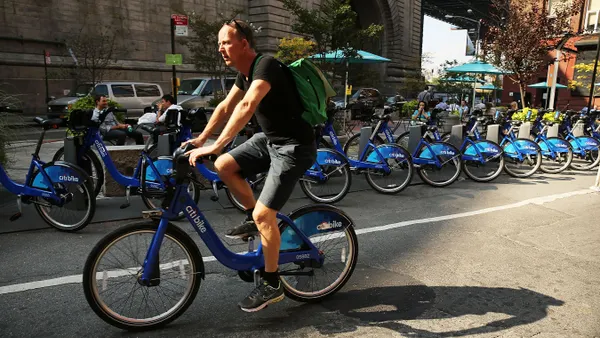Editor's Note: The following is a guest post from Haden Kirkpatrick, head of strategy and innovation at Esurance.
Across the U.S., semi-autonomous and driverless cars have taken to the streets more so than ever before. In 2017, California, Texas, Arizona and Washington were among the first states to roll out autonomous vehicles (AVs) on public roads (in limited testing areas). While it can be fun to imagine a world filled entirely with AVs, we’re still several years away from this reality.
Today’s smart cars collect tons of data — not only about the driver but the world around them, too — in order to make driving safer. In anticipation of an automated future, smart cities are also gathering information about our driving habits and behaviors. We’ll take a look at how that data is being used to improve vehicle-to-infrastructure technology and ultimately make the future of driverless technology safer and more efficient.
Charging stations in Columbus, OH
Smack dab in the Midwest, an unexpected location has been named a smart city — and for good reason. Just this past year, Columbus announced plans to set up 300 new electric-vehicle charging stations across the city. Beyond helping residents charge up, city planners intend to pull data and observe patterns to learn how people use the chargers. This information will help Columbus plan out future charging stations for a larger automated market.
Pay-as-you-park in the United Kingdom
Major cities across the U.K. have started rolling out smart technology. London recently introduced One Click Parking which uses real-time technology to find an open space and charges drivers to park by the minute (without the hassle of buying a ticket). This seamless transaction greatly reduces the time someone spends finding a spot and ultimately cuts down on parking lot chaos (ever been to a mall during the holidays?). The end goal is for AVs to locate available parking and pay without any human interaction.
Safer highways in Colorado
The Colorado Department of Transportation recently announced a new project — Road X — to help make Interstate 70 safer and smarter. Over the past two years, the state has experienced a 10% increase in accidents on the highway from Vail to Aspen — both popular tourist areas. With an autonomous future on the horizon, Colorado is implementing technology that can seamlessly integrate with these vehicles. Efforts include "Smart 70" which would be the first vehicle-to-vehicle communication system, and "Smart 25," which works to reduce traffic jams.
Lighting the way in Amsterdam
Since its origin in 2009, the Amsterdam Smart City Initiative has aimed to conserve energy, manage city traffic and help centralize information. Amsterdam encourages its residents to submit ideas and proposals that fit the criteria. One popular initiative involves flexible street lighting (or smart lighting) across the city.
This involves sensors situated onto the lampposts that can read everything from traffic congestion to air quality and much more. The information then gets sent to stakeholders (or systems) in real time. For automated vehicles, this data could be used to reroute a trip without skipping a beat.
Disaster prevention in Buenos Aires
As a city built on water, severe flooding in Buenos Aires is standard. But after a devastating flood that claimed the lives of 50 people in 2013, the city decided to tackle its less-than-stellar drainage situation. A new system was put in place along with sensors that could alert residents in real time of weather or flooding issues. In theory, this could also prevent water damage to thousands of automated vehicles, which could receive an alert to avoid or evacuate those areas — and more importantly, save lives.
With driverless technology already on the roads, the clock is ticking for cities to catch up to the unique demands of autonomous vehicles. These smart cities, which use data to understand new patterns and behaviors, are paving the way. Indeed, it will be interesting to see how rest of the world reacts.









